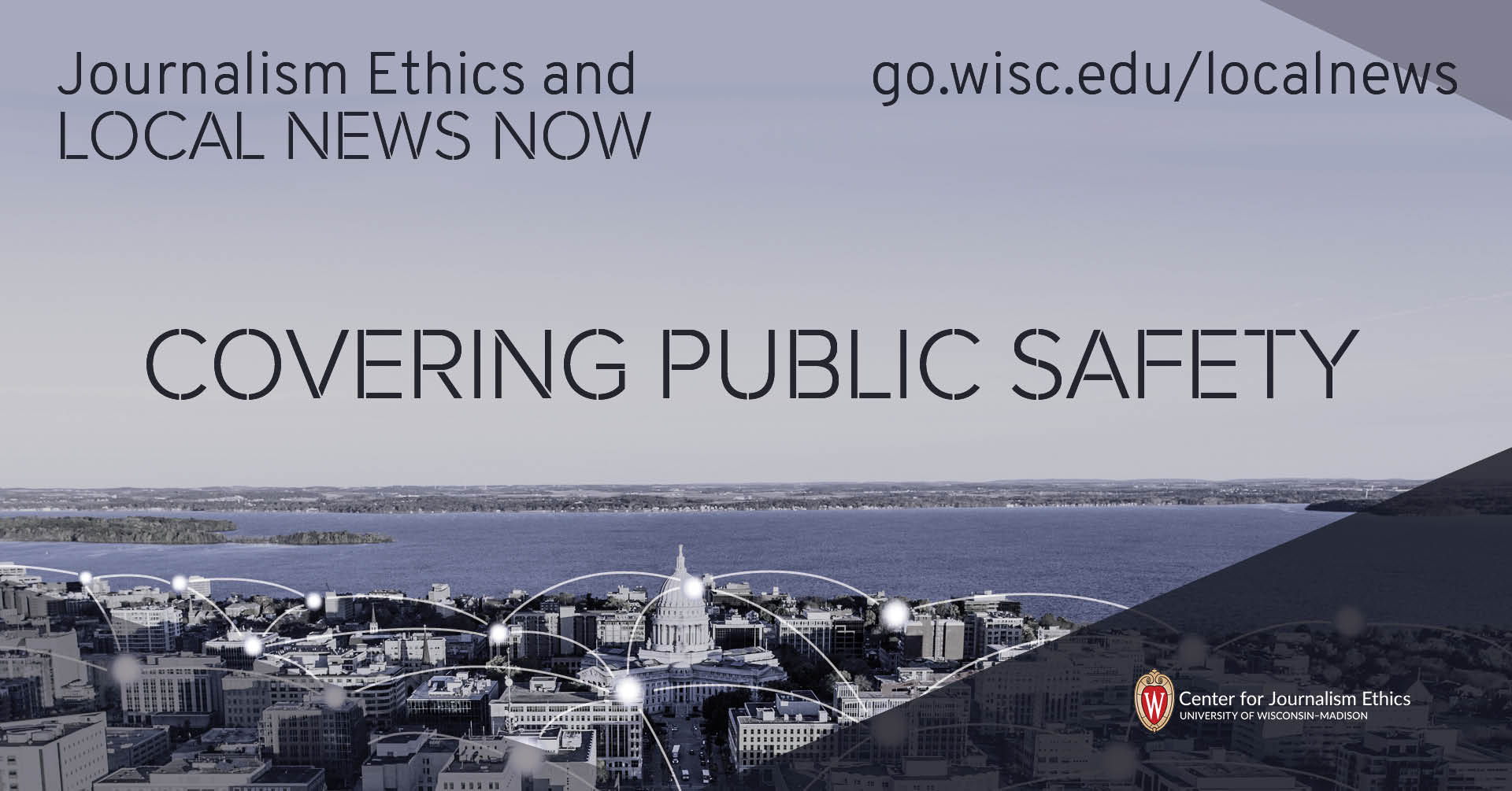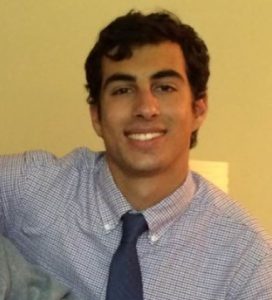
By Jack Kelly
Public safety. A catchall phrase used by public officials and journalists alike to talk about crime, police departments, emergency responses and much more. But what really is public safety at the local level? Who is in charge? How does it directly — and indirectly — affect the community? How will the last year, marked by a deadly virus, widespread calls for racial justice and an all-out assault on the truth, change the future of the United States and the role public safety departments and officials play across the country? Let’s evaluate how to tackle public safety stories at the local level.
PUBLIC SAFETY STORIES
May marks the one-year anniversary of George Floyd’s death. Now is an opportunity to evaluate the impact Floyd’s death — and the ensuing calls for change — had on local communities. Did your local city council pledge to re-evaluate the police department’s budget? Did officials bolster funding for police officers? Did police departments commit to making changes when it comes to use of force? Are they fulfilling them? How are community members reacting to this anniversary?

Sources
- Local activists who have been advocating for change in your community.
- Local officials who are considering changes to policy.
- Local police departments, to get their reactions to any proposed changes to policing in your community.
- A database from the National Conference of State Legislatures tracking statewide police reform legislation introduced in every state across the country.
- Will Crozier, Research Director, Duke Law Center for Science and Justice (organization has been tracking police reform across the country since George Floyd’s death); Email: william.crozier@duke.edu.
While the United States went exactly a year during the COVID-19 pandemic without a high-profile mass shooting, a surge in daily gun violence resulted in roughly 4,000 more murders than in 2019. But what drove that trend? What are local officials doing to curb the violence? Are there larger, systemic issues at play? This story offers an opportunity to report on a well-known but undercovered crisis across the United States.

Sources
- The Gun Violence Archive, whose database tracks shootings in real time.
- Rev. Michael McBride, executive director of Live Free USA, a gun violence prevention nonprofit; Email: mmcbride@faithinaction.org.
- Richard Rosenfeld, University of Missouri – St. Louis professor and expert on the social sources of violent crime; Email: richard_rosenfeld@umsl.edu.
When the coronavirus pandemic began to grip the United States last year, jury trials, a fundamental piece of the American judicial system, were put on pause. After all, conducting a jury trial — dozens of people crowded together inside — could have been detrimental to attempts to curb the spread of COVID-19. But now what? The judicial system in many states has been forced to stop and start to endure new waves of coronavirus infections. All the while, victims and the accused are, quite literally, waiting for their day in court. Is your local judicial system experiencing a backlog? What are they doing to clear it? Can technology help clear the backlog and could it change how trials are conducted down the line?

Sources
- A comprehensive list of how courts in all 50 states and Washington, D.C. are operating during the COVID-19 pandemic.
- The Sentencing Project, an organization that advocates on behalf of the incarcerated, has a database of state organizations who can provide insight about how a backlog of trials can be a health threat to the incarcerated and the surrounding community.
- A study focused on COVID-19 in state and federal prisons found that inmates are twice as likely as the general population to die from COVID-19, suggesting that more people are taking plea deals because delay of a jury trial could lead to their death.
- A National Center for State Courts study highlighting the volume of pre-pandemic court cases and jurors.
- Sam S. Adams, technology expert; Email: ssadams@us.ibm.com, Tel: 910-574-9959, LinkedIn.
According to a report from the Center for Strategic and International Studies, domestic terrorism incidents are at the highest they’ve been in decades. Far-right ideologies are driving the bulk of this violence, and the Internet and social media are ensuring that white supremacist ideas can infiltrate any community in the country. From racist fliers turning up in rural mailboxes to violent attacks and intimidation online, this old story is taking place with seemingly renewed vigor in every state in the country.

Sources
- This local editor, writing from Appalachia, shares what she’s learned about covering white supremacy and white nationalism, and urges a journalistic focus on those people experiencing hate as well as those concerned about the radicalization of family members.
- This report from the Center for Strategic and International Studies charts the rise in domestic terrorism as well as the growing number of military personnel and police officers who are participating in domestic terror.
- The Southern Poverty Law Center’s Hate Map tracks active hate groups in the U.S. and sorts them via ideology.
- This Journalist Resource guide, “10 Tips for Covering White Supremacists and Far-Right Extremists” offers critical cautionary tales, urging journalists to avoid helping extremists spread their message.
Across the United States, prisons cut off visits between incarcerated people and their families in an attempt to curb the spread of COVID-19. In turn, countless people have gone months without being able to see their families. Take some time to evaluate what impact this separation has had on incarcerated people and their families. Are local officials prepared to ease mitigation protocols? Are there concerns about new variants?

Sources
- The Marshall Project is tracking how prisons in each state are limiting visits in response to COVID-19.
- The Sentencing Project, an organization that advocates on behalf of incarcerated people, has a database of state organizations who can provide insight into the struggles incarcerated folks encounter while being away from their families.
INTERVIEW W/ CRIMINAL JUSTICE EXPERT RICHARD ROSENFELD
INTERVIEW W/ PUBLIC SAFETY REPORTER LAWRENCE ANDREA

Lawrence Andrea
Lawrence Andrea covers public safety for the Indianapolis Star. He shares his ideas for covering the beat at the local level.
Oftentimes the folks involved in public safety stories are experiencing the worst day of their lives. What advice do you have for portraying folks involved with these stories as people, not just names on a page?
When it comes to going beyond “names on a page,” devoting your time to learning more about a person is essential. Follow-up stories where you sit down with the family of a victim or someone caught up in an incident is a great way to learn more about a situation and get context that may cast an event in a totally different light.
In Indianapolis in 2020, for example, the city saw a record number of homicides. Instead of simply reporting a death and leaving it, we began to reach out to families and write profile stories about victims that let the community know there were people behind the staggering numbers.
How do you follow-up after a breaking news incident to help mitigate feelings that you, the reporter, dropped in to cover a tragedy and aren’t actually invested in the people affected by the story?
A willingness to learn more about a situation goes a long way in breaking down some of these perceptions. Taking the time to sit down and listen to a grieving family or someone caught up in a difficult situation not only gives you more context to a potentially tragic situation, but it also shows people you care. And if you don’t care about the work you’re doing, you shouldn’t be there in the first place.
Any kind of follow-up stories show an effort to learn more about a situation. But it’s those that involve speaking with and listening to those affected by an event that show you’re willing to listen and understand all sides to a story.
What can you do to communicate to your readers how you cover breaking public safety news, so their questions about your reporting can be answered in real-time?
The best way to communicate with readers about how something is done is to tell them. Keeping lines of communication open — putting your email address at the bottom of the article, interacting with readers on Twitter and encouraging people to call with tips — is the best way to engage.
What advice do you have to help local journalists shift their coverage away from sensationalized crime toward the disparities and inequities that are often associated with higher rates of crime?
If you work the crime beat, I think it’s essential to learn all you can about your community. And the best way to learn about your community is by being in it — walking neighborhoods, speaking with local community leaders in high-risk areas and getting to know the place you cover.
The Center for Journalism Ethics encourages the highest standards in journalism ethics worldwide. We foster vigorous debate about ethical practices in journalism and provide a resource for producers, consumers and students of journalism. Sign up for our quarterly newsletter here.
